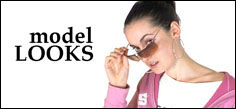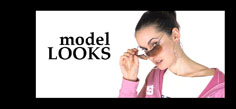Designing the layout for an album is not just a matter of placing images on pages. The manner in which each double-page spread is designed has a significant effect on the overall impression achieved. Graphic design is of course an area of expertise in its own right, but photographers who layout albums do need to achieve at least a basic understanding of the subject. While it is certainly not possible to address adequately the subject in a single article, it may be worthwhile introducing a few basic principles and ideas. The three page layouts below show three different approaches to the presentation of the same information - full bleed, a black border and asymmetrical balance. Which one wins, and why?
 The best way to introduce graphic design is arguably with the important principle that it is visual and cannot be undertaken successfully with a set of guidelines, a few measurements and a rigid format. It is the eye that must be pleased rather than the ruler or calculator! The sophisticated combination of eye and brain plays odd tricks, and we must acknowledge the consequent optical illusions if a design is to succeed. For instance, horizontal lines tend to drop down the page so have to be raised above the centre line if we want them to appear in the middle. Similarly, a three-inch square and a circle with a diameter of three inches will not look the same size on a page, so the circle should be increased in diameter until it appears to balance the weight of the square. If two elements on a page should appear aligned, position them by eye to achieve the required result. If they appear to be aligned, no one will question whether or not they actually are. Do the same job mathematically and the alignment may look incorrect.
The best way to introduce graphic design is arguably with the important principle that it is visual and cannot be undertaken successfully with a set of guidelines, a few measurements and a rigid format. It is the eye that must be pleased rather than the ruler or calculator! The sophisticated combination of eye and brain plays odd tricks, and we must acknowledge the consequent optical illusions if a design is to succeed. For instance, horizontal lines tend to drop down the page so have to be raised above the centre line if we want them to appear in the middle. Similarly, a three-inch square and a circle with a diameter of three inches will not look the same size on a page, so the circle should be increased in diameter until it appears to balance the weight of the square. If two elements on a page should appear aligned, position them by eye to achieve the required result. If they appear to be aligned, no one will question whether or not they actually are. Do the same job mathematically and the alignment may look incorrect.
Now consider the concept of "white space". Note that white space may be black or grey or any other colour! Most photographers understand the meaning of this term, but no one should attempt an album layout without doing so. Standard templates created by graphic designers employed by album companies help to keep the uninitiated from straying too far adrift but, even so, some understanding is desirable.
White space, sometimes known as negative space, is basically the areas on a designer's paper where nothing is to be printed. White space is nothing, the absence of content, extravagance, but it provides context and meaning by influencing the way the human eye perceives the page. If economy were the highest priority, no white space would remain on a page, but a graphic designer recognizes that the visual aesthetic is more important than any other consideration. Graphic design is visual and should not be unduly influenced by economy or use of a ruler. What the eye perceives is the overriding consideration. The management of white space might therefore be considered the process of arranging pictures on album pages in a way that is pleasing and interesting to the eye. It is also worth noting that the double-page spread is a graphic designer's starting point. That is what a viewer sees when an album is opened, so it is also where a design and layout process begins.
 White space might be said to be as important as the pictures it surrounds. It draws attention to content yet separates content from other content. It also creates a resting place for the eye. White space has to be created - not just filled. Neither should it just happen - it is an important part of the design process that needs to be carefully managed. Its shape and position on the page are as important as the shape and position of the content items. If it is not adequately designed and controlled, the result may feel dead or even oppressive. White space should be used to vary the density and rhythm of page content. Separate content items by different amounts - push them closer together here and further apart elsewhere. Be rhythmic and imaginative, follow your vision and do whatever seems to please the eye.
White space might be said to be as important as the pictures it surrounds. It draws attention to content yet separates content from other content. It also creates a resting place for the eye. White space has to be created - not just filled. Neither should it just happen - it is an important part of the design process that needs to be carefully managed. Its shape and position on the page are as important as the shape and position of the content items. If it is not adequately designed and controlled, the result may feel dead or even oppressive. White space should be used to vary the density and rhythm of page content. Separate content items by different amounts - push them closer together here and further apart elsewhere. Be rhythmic and imaginative, follow your vision and do whatever seems to please the eye.
Variety is an essential characteristic of a successful modern album layout. If layouts are the same or similar, page after page, the content will be perceived as uninteresting or even boring. This does not mean that a particular layout cannot be reused on another page. However, it is best to use quite different page layouts to separate those that are basically the same. As the pages of an album are turned, the viewer should not be able to guess the content or layout of the following page. A well designed album should also deliver occasional surprises to maintain interest. Variety is equally important at page-layout level. Vary the density, colour, size and weight of content items. Use black-and-white or toned images to lead the eye across the page layout, and from the left-hand page to the right-hand one, and try to create diagonal or angular movement of the eye to break out of typical easy-to-use rectangular formats.
Another key consideration is symmetry - or rather the lack of it! Symmetry in overall design or page layout might seem tidy and organized, but is likely to lead to an uninteresting or monotonous result. Perhaps even worse, too much symmetry tells perceptive viewers that the designer was lazy. It has the potential to kill your work. The basic format should not be allowed to determine the layout. Indeed the format must be the slave of the designer and be obliged to serve their vision. It may prove difficult to place asymmetrical content, usually images, in a rigid symmetrical page layout. The pictures may look uncomfortable wherever they are positioned. It is much better to allow the images to find a suitable location on a page and arrange a layout around these needs.
 A good designer will give a high priority to the achievement of movement throughout an album. Some people may be surprised or even confused by the concept of movement in a two-dimensional page layout, but a feeling of movement, perhaps in three dimensions, is not that difficult to achieve. Photographers know all about form and depth in images, so the concept of movement on a page should not be difficult to understand. Movement can be achieved through depth, the third dimension in a flat image, or by skillful arrangement of content on a page. Images can be placed within larger versions of themselves, creating a border consisting of the repeated edge detail from the main image. This increases the perception of depth. It is also possible to draw the eye across a page by careful use of lines, the relative emphasis placed upon elements of content, and the manipulation of white space. Static layouts are dead and consequently boring. Movement produced a dynamic and stimulating feel which is much more interesting.
A good designer will give a high priority to the achievement of movement throughout an album. Some people may be surprised or even confused by the concept of movement in a two-dimensional page layout, but a feeling of movement, perhaps in three dimensions, is not that difficult to achieve. Photographers know all about form and depth in images, so the concept of movement on a page should not be difficult to understand. Movement can be achieved through depth, the third dimension in a flat image, or by skillful arrangement of content on a page. Images can be placed within larger versions of themselves, creating a border consisting of the repeated edge detail from the main image. This increases the perception of depth. It is also possible to draw the eye across a page by careful use of lines, the relative emphasis placed upon elements of content, and the manipulation of white space. Static layouts are dead and consequently boring. Movement produced a dynamic and stimulating feel which is much more interesting.
In summary, design with your eyes and your heart. Have a vision, be bold, and do whatever you do deliberately and with style.






